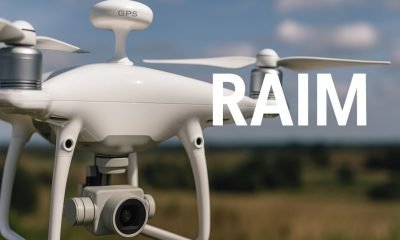- Acronym Guide
- AAM
- ABS
- AC
- ACAS
- ADS-B
- AFAC
- AGL
- AI
- AIM
- ALS
- AM
- AMA
- ANSP
- APPI
- AUV
- AUVSI
- ARPAS-UK
- ASTM
- ATC
- BVLOS
- CAA
- CAAC
- CAB
- CASA
- CATT
- CBO
- CBR
- CBRN
- CDMA
- CDR
- CFR
- COA
- COMINT
- CORS
- COTP
- COTR
- CPTED
- CV
- C2
- DAA
- DEM
- DFI
- DFS
- DGCA
- DHS
- DOD
- DPA
- DPEs
- DRO
- DSM
- DSMX
- DSP
- DSSS
- DTM
- EASA
- EFT
- EO
- EOD
- EO/IR
- ELINT
- EMI
- ESC
- EVLOS
- eVTOLs
- FAA
- FCC
- FCS
- FHSS
- FICCI
- FLIR
- FOB
- FOV
- FPS
- FPV
- GBDAA
- GCP
- GCS
- GDPR
- GNSS
- GPS
- GSD
- GVC
- HDR
- HOGE
- IACRA
- ICAO
- ICS
- IMU
- INS
- IR
- ISA
- ISR
- ITU
- LAAMS
- LAANC
- LAATM
- LAI
- LBA
- LIDAR
- LOS
- LSALT
- MAC
- MAVLink
- MLIT
- MMS
- MSL
- MTOM
- NDAA
- NCSL
- NFZ
- NIST
- NMEA
- NOTAM
- NPA
- NPRM
- NTIA
- OEM
- OFDM
- OOP
- PASM
- PAV
- PCV
- PdM
- PEC
- PIC
- PID
- PIPL
- PLD
- PM
- PN
- PPK
- PPS
- PSM
- PWM
- UAM
- UAOP
- UAS
- UASTM
- UAV
- UCAVs
- UHD
- UHF
- USV
- UTM
- RAIM
- RCC
- RCS
- RFI
- ReOC
- RePL
- RMS
- ROI
- RPAS
- RPC
- RTH
- RTK
- SaR
- SAR
- SARP
- SBAS
- S.Bus
- SEDENA
- SfM
- SFOC
- SIGINT
- SLAM
- SMS
- SORA
- STTR
- sUAS
- TCAS
- TCCA
- TFR
- TIN
- TOF
- TP
- TPS
- TSA
- VHF
- VLOS
- VTOL
Drone Acronyms
Whats is SaR (Search and Rescue) & How Does it Work
Published
24 hours agoon
By
Jacob StonerTable Of Contents

Definition
Search and Rescue (SAR) refers to the coordinated operations conducted to locate, assist, and evacuate individuals in distress, often in remote or hazardous environments. In the context of drones, search and rescue operations leverage UAV technology to support or lead these efforts with speed, precision, and enhanced safety.
Usage
SAR drones are widely used by emergency response teams, coast guards, firefighting units, and humanitarian organizations. These UAVs are often equipped with thermal imaging, zoom cameras, and GPS to cover large areas quickly and locate missing persons. For instance, a thermal-equipped drone can scan a forest at night to find a lost hiker, reducing risk and response time for ground teams.
Relevance to the Industry
SAR is one of the most life-saving applications of drone technology. UAVs enable faster coverage in hard-to-reach or dangerous terrains, such as disaster zones, dense forests, and mountainous regions. They also provide real-time visuals, improving situational awareness for rescue teams. As regulatory frameworks evolve to support BVLOS and night operations, the role of drones in SAR continues to expand.
How Does an SAR (Search and Rescue) Operation Using Drones Work?
Deployment Planning: A SAR mission begins with identifying the search area and choosing the appropriate drone type—usually one with thermal or zoom capabilities.
Launch and Scanning: Pilots deploy the drone to conduct aerial sweeps of the search zone. The drone may follow pre-programmed flight paths or be manually controlled depending on terrain complexity.
Real-Time Data Collection: During flight, the drone transmits live video and sensor data to a command station. Teams monitor for heat signatures, motion, or clues indicating a person’s presence.
Target Confirmation and Team Dispatch: Once the drone identifies a target or area of interest, operators verify the findings. Rescue teams are then directed to the location using GPS coordinates and visual data.
Ongoing Aerial Support: Drones may continue to provide overwatch, monitor terrain changes, or assist with supplies while the ground crew performs the rescue.
Example in Use
“A thermal drone played a critical role in a recent SAR mission in Colorado, spotting a stranded hiker during a snowstorm. The drone guided rescuers directly to the heat signature in under 30 minutes.”
Frequently Asked Questions About SAR (Search and Rescue)
What kind of drones are used for SAR missions?
Drones with thermal cameras, high-zoom optics, long flight times, and weather resistance are ideal for SAR. Examples include the DJI Matrice 30T and Parrot Anafi USA.
Can drones operate in SAR missions at night or in bad weather?
Yes, many SAR drones are designed for low-light and night operations using infrared. However, severe weather conditions like high winds or heavy rain can limit effectiveness.
Do SAR drone missions require special permissions?
Often, yes. BVLOS (Beyond Visual Line of Sight) and nighttime operations typically require waivers or advanced certification depending on the country’s regulations.
For examples of these acronyms visit our Industries page.
As the CEO of Flyeye.io, Jacob Stoner spearheads the company's operations with his extensive expertise in the drone industry. He is a licensed commercial drone operator in Canada, where he frequently conducts drone inspections. Jacob is a highly respected figure within his local drone community, where he indulges his passion for videography during his leisure time. Above all, Jacob's keen interest lies in the potential societal impact of drone technology advancements.











